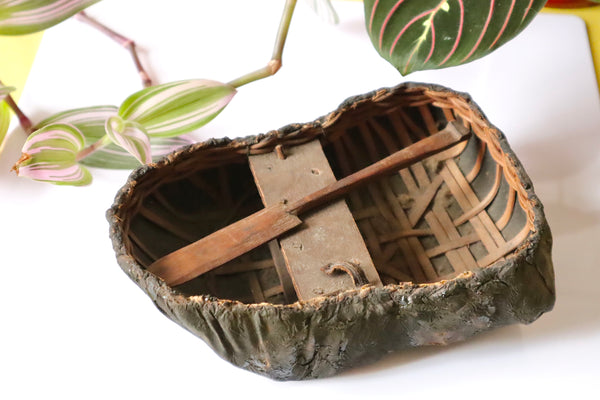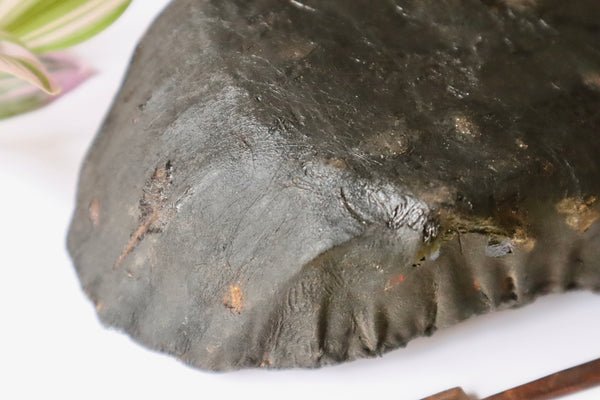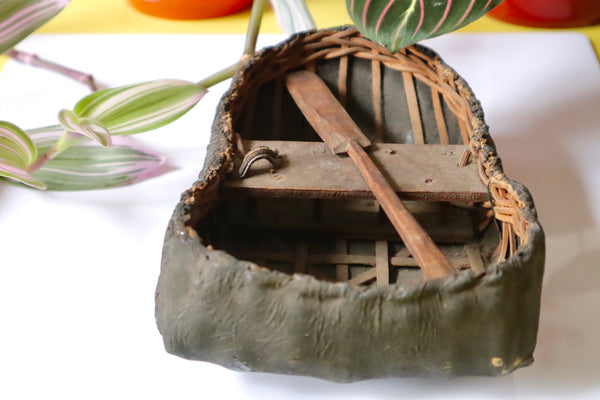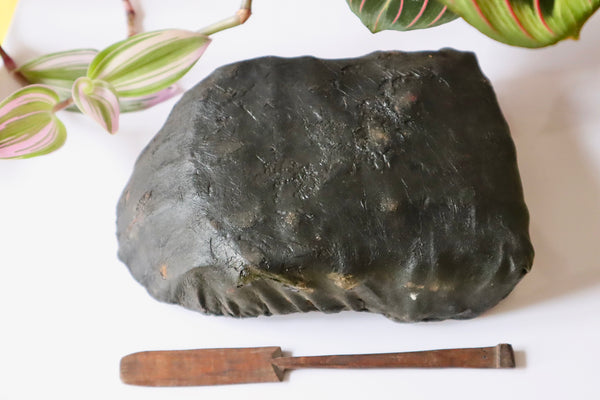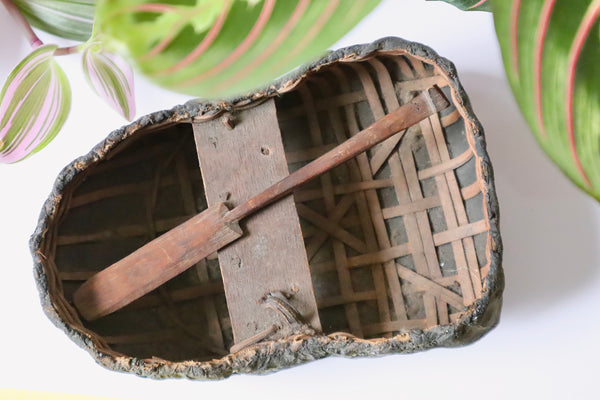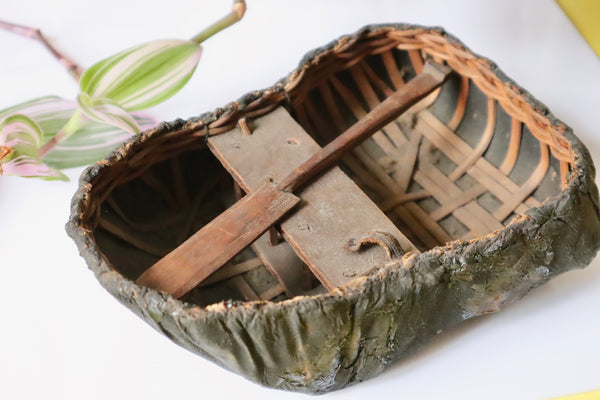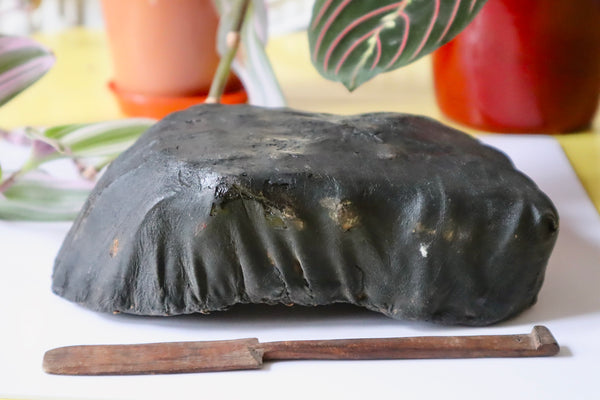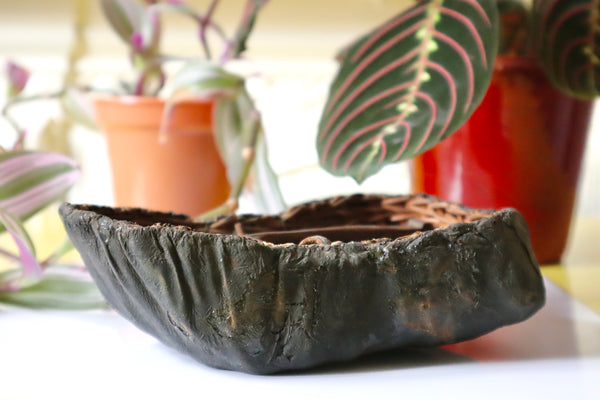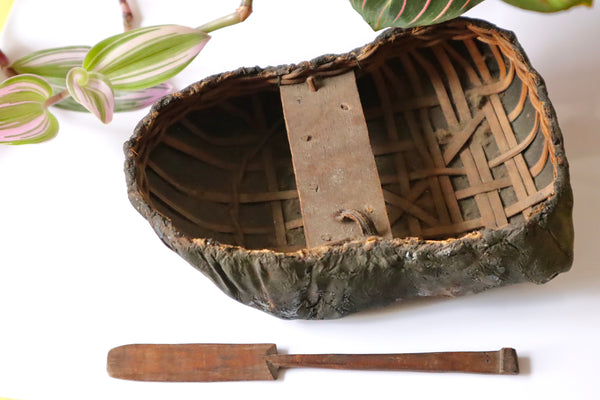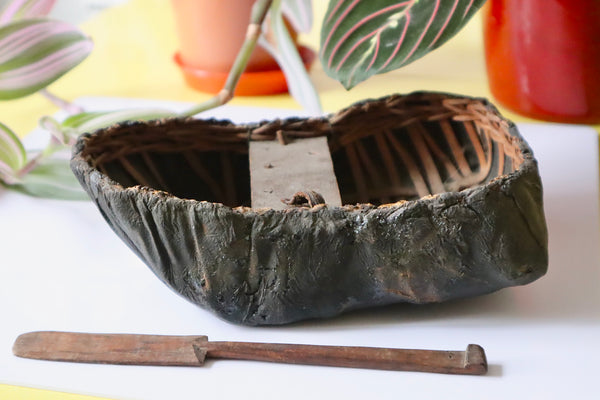**RESERVED FOR MEGAN** A Rare 19th Century Folk Art Miniature Apprentice Piece Coracle Boat
FREE UK & WORLDWIDE SHIPPING ON ALL ORDERS
A Superb 19th Century Folk Art Miniature Scale Apprentice Piece Coracle Boat.
This miniature piece is believed to have been made by an apprentice to practice the traditional coracle making skills, but on a smaller scale, before moving on to full size boats.
A fabulous piece of Welsh social history right here!
Condition is good, commensurate with age. Quite a fragile piece. Structurally sound though. Some blemishes and age related wear to be expected.
Measures 17cm x 11cm x 4cm
Weighs 62.66 grams
More about the Coracle:
The Teifi Coracle has been in use for over 2000 years. The Romans saw coracles when they invaded Britain in 55 BC and Julius Caesar wrote in detail about skin-covered boats he had seen while travelling the coastline.
The Coracle’s primary use was for net fishing and Coracle fishing is in fact one of Britain’s oldest traditions. It is a highly skilled and ancient Welsh traditional method of fishing. Two fishermen work in perfect harmony. Fishing at night to avoid casting shadows on the water, they keep steady and hold a net between them ready to catch the fish.
During the 18th and 19th Century coracle fishing was the main source of income for poor families living along the banks of the river. There were once 200 coracles on the river, however, during the late 1930’s, the number of net licenses was restricted to just 12.
Coracles were traditionally constructed from cleft willow with a plaited semi-circular reinforcing band found in the stern and twisted hazel to make a carry strap. A single transverse lath behind the seat made from plaited willow reinforced to the boat structure and made sure that the base of the boat was flat.
The outer shell was traditionally made from animal hide, however, this was succeeded by flannel and calico in the 18th and 19th centuries. Man made fabrics such as cordura and fibreglass are now used as construction materials, along with rubber for the carry straps.











